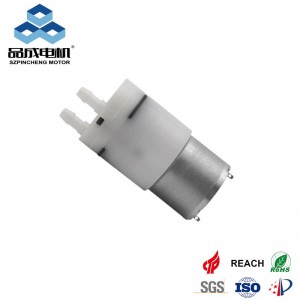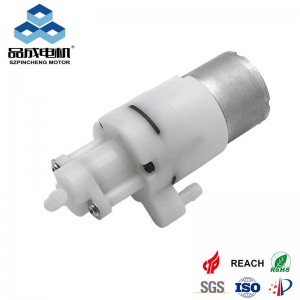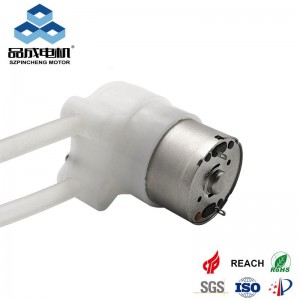Analysis and solutions of common failures of micro diaphragm pumps
The micro diaphragm pump is a device that transfers fluids by forming a pressure difference through the reciprocating motion of the diaphragm. It is widely used in the fields of medicine, chemical industry, environmental protection, etc. The following are its common fault types, cause analysis and corresponding maintenance methods.
1. Common fault types and cause analysis
1-1. The pump cannot start or has no flow
Possible causes:
- Power supply problem: power is not connected, battery is low or power cord is damaged
- Air source problem (pneumatic diaphragm pump): insufficient air source pressure (usually 0.4~0.7MPa is required) or air inlet filter is clogged
- Diaphragm damage: diaphragm rupture or aging makes it impossible to form an effective pressure difference
- Inlet and outlet blockage: pipeline is blocked by particles or crystals
- Valve failure: air inlet valve or exhaust valve is stuck
1-2. Insufficient flow or pressure drop
Possible causes:
- Diaphragm wear: After long-term use, the diaphragm becomes thinner or deformed, and the sealing performance decreases
- Valve leakage: The one-way valve is worn or stuck
- Pump body leakage (pneumatic diaphragm pump): air pressure pipeline leakage
- Suction pipeline leakage: Poor sealing of the feed pipe causes air to enter
- Media viscosity is too high: Not suitable for the current pump's delivery capacity
1-3. Abnormal noise or vibration
Possible causes:
- Bearing damage: motor or pump shaft bearing wear
- Diaphragm or valve ball stuck: foreign matter in the pump body
- Unstable air source (pneumatic diaphragm pump): excessive air pressure fluctuations
- Pump body is not firmly fixed: unstable installation
- Drive system failure: motor or gear damage
1-4. Leakage (seal failure)
Possible reasons:
- Diaphragm rupture: improper material selection or expiration of service life
- Aging of the sealing ring: failure of the sealing ring at the connection between the pump body and the diaphragm
- Loose bolts: the pump body connection bolts are not tightened
- Excessive pressure in the pump chamber: exceeds the design pressure
2. Maintenance methods and preventive measures
2-1. Daily maintenance
- Regular cleaning: Clean the pump body, inlet and outlet pipes and diaphragms to prevent clogging by impurities
- Parts inspection: Regularly check the pump shaft, bearings, seals and other key parts
- Lubrication maintenance: Lubricate the bearings, gears and other easily worn parts
- Clearance adjustment: Check the inlet and outlet valves to ensure smooth opening and closing
- Leakage inspection: Regularly check the performance of the sealing parts
2-2. Troubleshooting steps
| Fault phenomenon | Troubleshooting steps | Repair method |
| Pump does not start |
1. Check power connection |
Replace power supply/battery |
| Insufficient flow |
1. Check if the pipe is blocked |
Clean or replace pipes Replace diaphragms Clean or replace valves |
| Abnormal noise |
1. Check the bearing condition |
Replace worn bearings; clean foreign matter or replace parts; reinforce pump installation |
| Leakage |
1. Check diaphragm integrity |
Replace damaged diaphragm; Replace aged seal ring; Re-tighten bolts |
2-3. Precautions for diaphragm replacement
- Select appropriate materials: Select corrosion-resistant and wear-resistant diaphragm materials according to the characteristics of the conveying medium
- Correct installation: Install according to the operating instructions to ensure that the diaphragm fits tightly with the pump body
- Installation sequence: Install the diaphragm first and then the pump cover to avoid damage to the diaphragm during installation
- Seal inspection: Check the overall sealing performance of the pump body after replacement
3. Preventive maintenance suggestions
- Avoid overload operation: operate strictly according to the rated flow and head
- Prevent dry operation: ensure that the pipeline is full of medium before starting
- Regular inspection: establish a regular inspection system to detect problems early
- Environmental control: keep the working environment clean and avoid impurities entering the pump body
- Spare parts management: reserve commonly used wearing parts such as diaphragms, sealing rings, etc.
Through the above systematic fault analysis and maintenance methods, the service life of the micro diaphragm pump can be effectively extended and unexpected downtime can be reduced. For complex faults, you can contact Pincheng Motor to provide you with professional product explanations. Welcome to contact us.
you like also all
Post time: Jun-27-2025




